![]() Jon Matlack, the nasty lefty whose stuff was way more effective than his record ever reflected, is finally getting the recognition he deserves.
Jon Matlack, the nasty lefty whose stuff was way more effective than his record ever reflected, is finally getting the recognition he deserves.
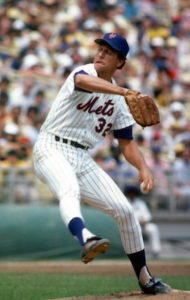
Matlack, from SABR: https://sabr.org/bioproj/person/c0ddd500
The Mets announced earlier this year that Matlack was among three deserving new enrollees in the club’s oft-neglected Hall of Fame: Edgardo Alfonzo and Ron Darling are the other two.
The starting rotation onto which Matlack earned his way in 1972 wasn’t an easy one to crack. The 17-year-old first-round draft pick out of West Chester, Pa. in 1967 (4th in the country that year) had the mixed blessing of coming around at a time when slightly older contemporaries like Seaver, Koosman, Gentry and Ryan were just establishing themselves as big-league youngsters with the Mets and so he spent nearly three full seasons at AAA waiting his turn.
![]() Interestingly Matlack got a look with the September callups of 1970, but never appeared in a game. What number did he wear then? Well, that depends on where you looked–and when.
Interestingly Matlack got a look with the September callups of 1970, but never appeared in a game. What number did he wear then? Well, that depends on where you looked–and when.
The Daily News announced his arrival on September 3 that year and indicated that Matlack had been assigned No. 27.
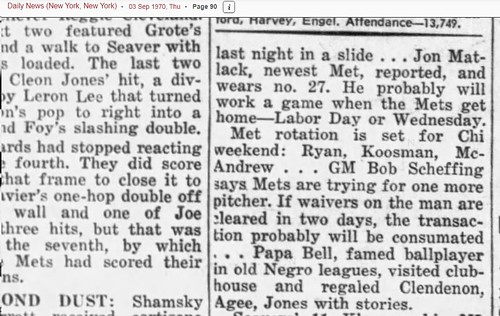
![]() As often accompanies these mysteries the Mets were on the road at the time in St. Louis and en route to Chicago, where sure enough Matlack appeared on a scorecard roster from that series in Wrigley– only this time listed as No. 50:
As often accompanies these mysteries the Mets were on the road at the time in St. Louis and en route to Chicago, where sure enough Matlack appeared on a scorecard roster from that series in Wrigley– only this time listed as No. 50:
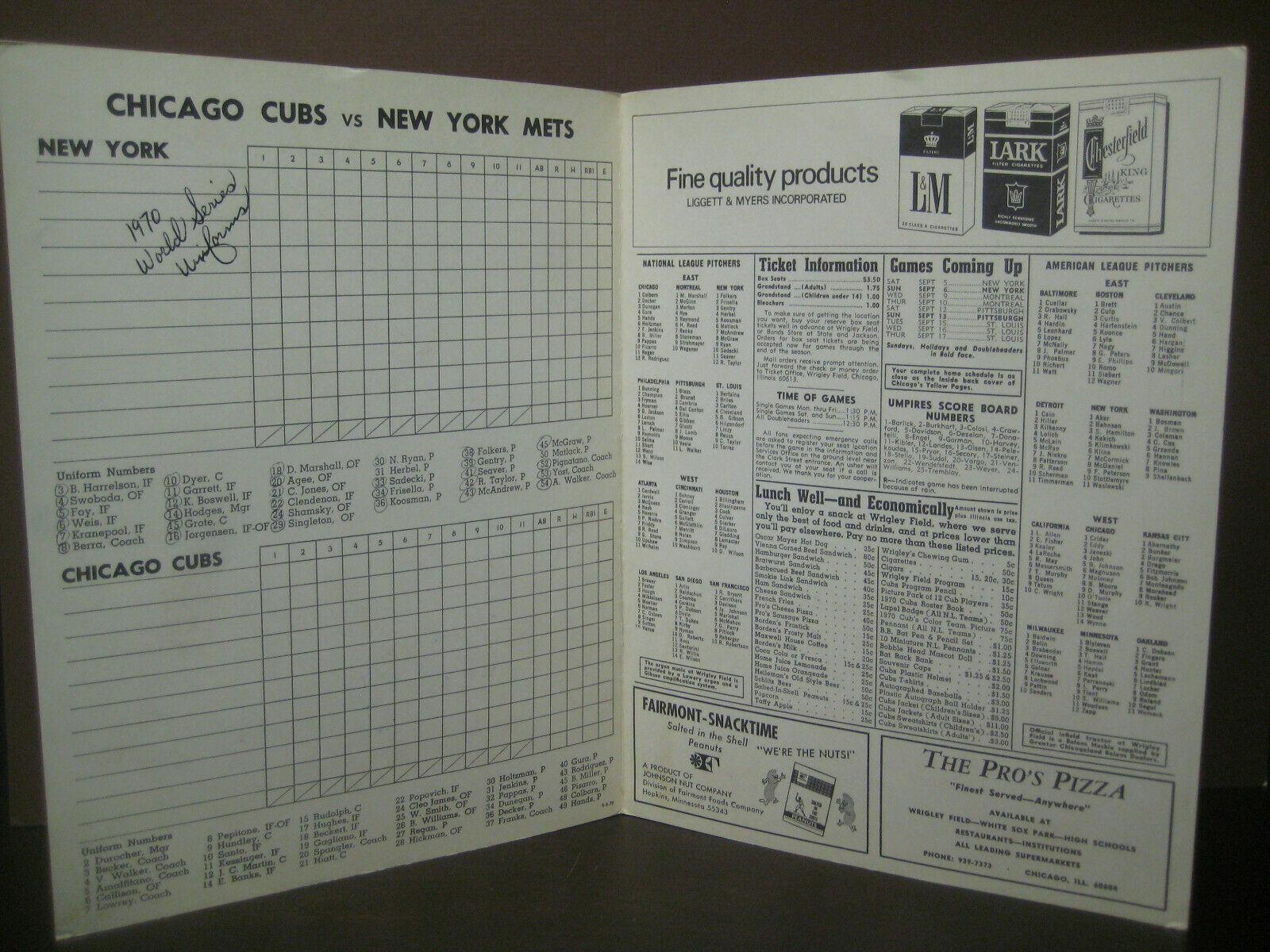
![]() Back in New York, a scorecard accompanying the Sept. 10 game at Shea lists Matlack wearing neither 27 nor 50, but 35. We’ve has this record for some time and consider it the unoffical official record: Matlack was in uniform and active but simply didn’t appear.
Back in New York, a scorecard accompanying the Sept. 10 game at Shea lists Matlack wearing neither 27 nor 50, but 35. We’ve has this record for some time and consider it the unoffical official record: Matlack was in uniform and active but simply didn’t appear.
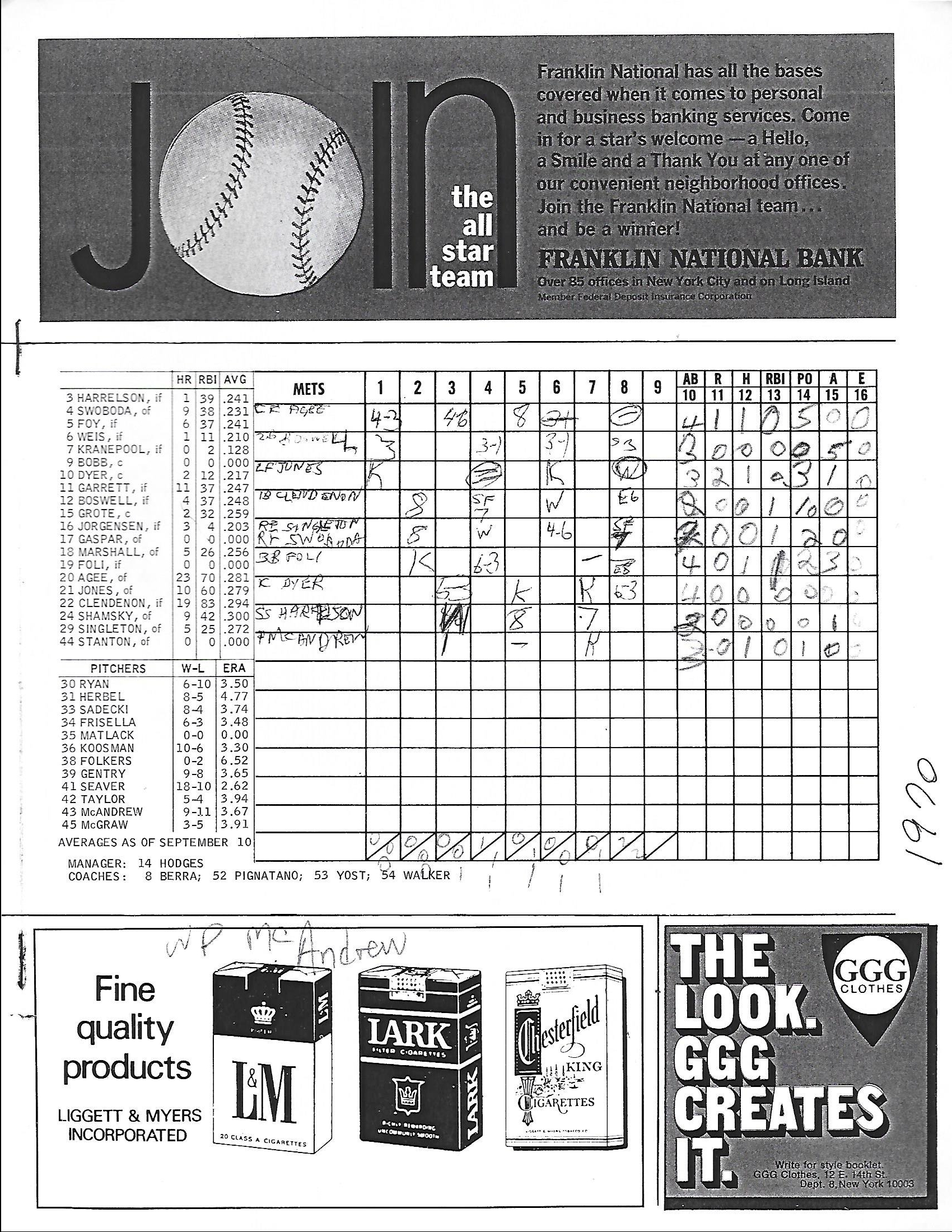
Interestingly if you read the Daily News clip above–one hell of a notes column with Cool Papa Bell making an appearance–you’ll also get the whisper that GM Bob Scheffing was in the process of shopping for an unnamed veteran pitcher who needed to clear waivers. This is because the defending world champs were in a dogfight for a division crown at the time with Pittsburgh and Chicago. The Mets reportedly were seeking Yankees’ veteran lefty Steve Hamilton but they were blocked when the White Sox made a deal for him. Instead they scooped up Dean Chance from Cleveland.
This is notable for our tale because Chance was assigned No. 27. He also played a crucial role in the Mets’ ultimate shortcoming in that pennant race. Chance’s first Mets’ appearance came in the 10th inning of game 2 of a doubleheader with division-leading Pittsburgh on Sept. 20. The Mets won Game 1, but Dean blew his Chance, so to speak. Called on to relieve Tug McGraw with a runner on second, one out and 1 run in giving the Pirates a 6-5 lead, Chance intentionally walked Dave Cash, gave up a 2-run triple to light-hitting Gene Alley, then a squeeze bunt from Dave Guisti. The 4-run rally was more than enough and the Mets never got closer in the race.
Matlack, presumably wearing No. 35, watched it all from the bullpen and wouldn’t participate in meaningful Mets baseball until a star turn in the 1973 playoffs. In spring training of 1971, Matlack was again wearing No. 35:
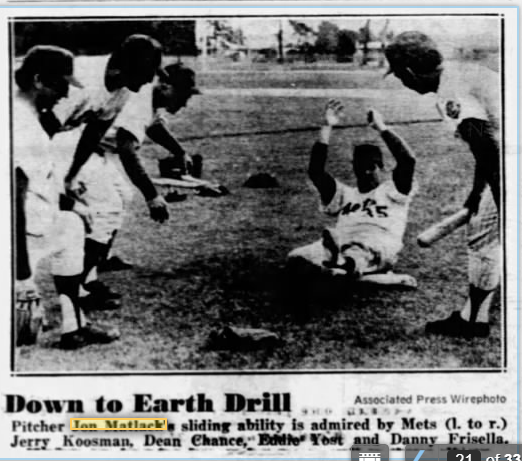
But by the time he got a call to the Mets in July, 35 was on the back of teammate Charlie Williams and so Matlack was issued No. 32, with which he made his big-league debut and would wear to a Rookie-of-the-Year performance in 1972, the aforementioned dominance in the 1973 postseason, and All-Star appearances in 1974, 1975 and 1976, before the diminishing Mets traded him to Texas following a disappointing performance in 1977. Matlack spent six seasons in Texas including an excellent 1978 (15-13, 2.27, 270 innings and 18 complete games), and later went on to star in the Senior League in 1990, and coach for several organizations.
Forty-three years later, Matlack is coming back to where he belongs.








